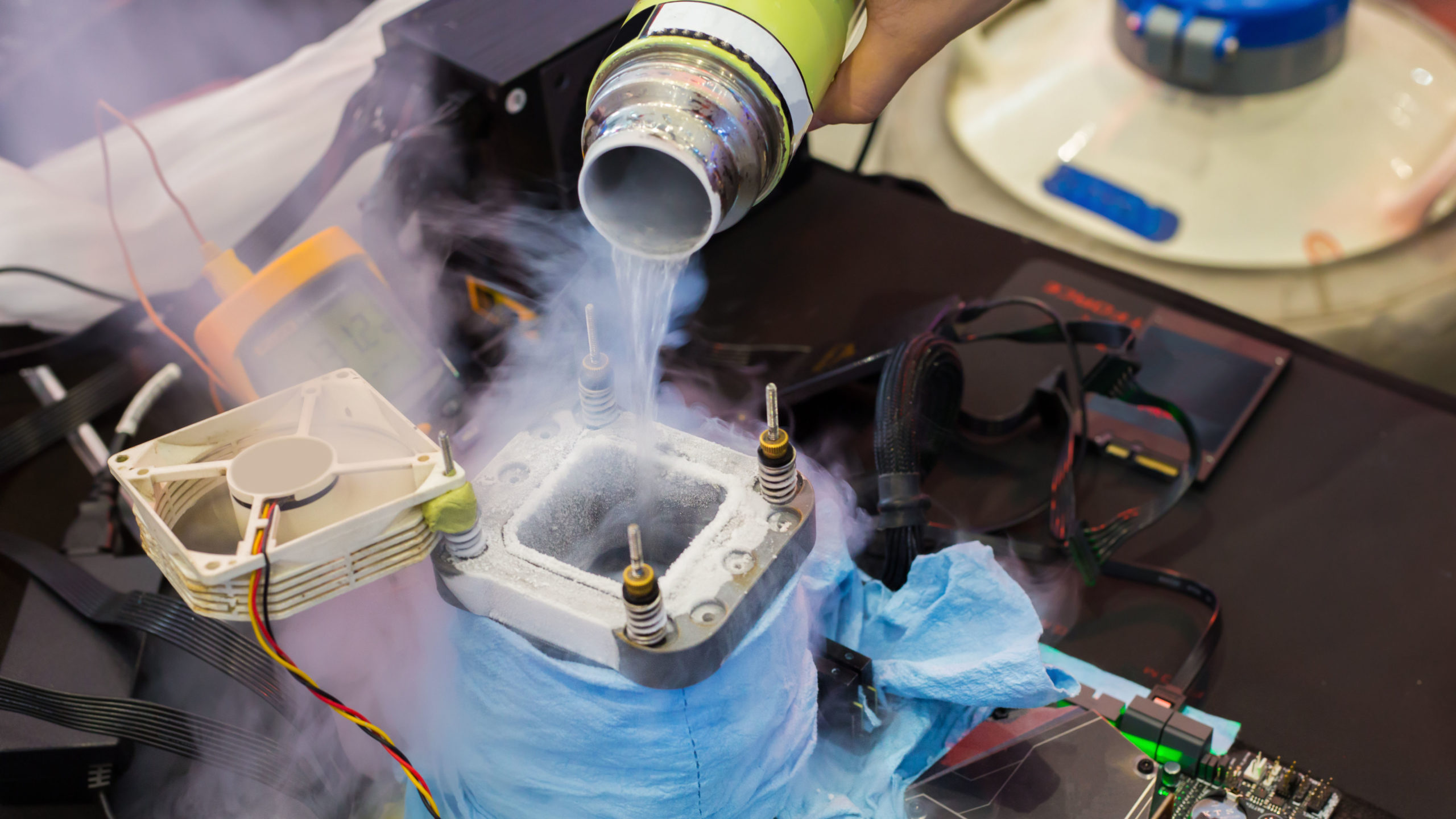Famous overclocker Hicookie has achieved the highest frequency overclock so far on Intel’s new flagship Core i9-11900K. With 5 of the processor’s 8 cores deactivated, he was able to use that extra headroom to hit a whopping 7.314-GHz on the first core with help from liquid nitrogen cooling and a high-end Aorus motherboard.
Hicookie is sponsored by Gigabyte, which issued a press release a few hours after the record posted to HWBot, stating that he used the Z590 Aorus Tachyon motherboard to reach this clock speed. Intended to compete with the best motherboards, the Tachyon launched last month but it doesn’t appear to be for sale yet in the U.S., with B&H Photo listing it as a pre-order for $529.
Gigabyte’s motherboard carries a premium price because it’s designed with and for extreme overclocking. The Tachyon has features such as a 12+1 phase power delivery system and Vishay Sic840 power stages that are rated for 100 amps, allowing for a full 1,300 amps of juice in total.
The Core i9-11900K is Intel’s new flagship CPU sporting the Rocket Lake architecture with 8 Cores, 16 threads, and a maximum boost frequency of 5.3GHz. (Check out our Core i9-11900K review for more details.)
It didn’t take long for someone to break the 7-GHz barrier on Rocket Lake. A few days ago we covered two overclockers who achieved some impressive results with the 11900K as one overclocker hit 6.5 GHz, another managed a flat 7 GHz.
What’s even more unique about Hicookie’s overclock is the configuration he used to achieve 7.3 GHz. First, five cores were disabled, allowing the remaining cores to soak up the extra power and cooling capabilities of the system. As a result of the disabled cores; 11900K’s core voltage was also vastly reduced to just 1.305v, a voltage that is very safe to run on Intel’s 14nm parts.
Hicookie also used a combination of CPU multiplier and BCLK overclocking to reach the 7.3 GHz core speed. This is something you rarely see, but in some cases boosting your BCLK (base clock) can result in higher core frequencies, depending on the CPU architecture.
However, Intel’s older Comet Lake architecture still beats out Rocket Lake on the CPU-Z validation list when it comes to world record overclocks. Maybe soon, we’ll see a Rocket Lake chip break the 7.5 GHz barrier like many of Intel’s older CPUs are capable of doing.
